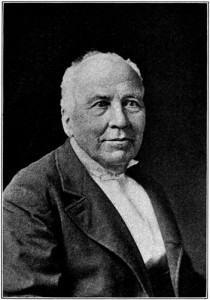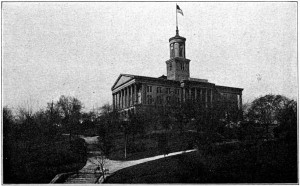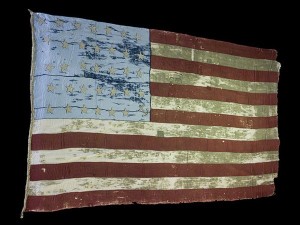Old Glory when it was young
It flew at Yorktown when the American Revolution ended. It flapped at Gettysburg in November 1863, when Abraham Lincoln spoke his memorable words. It’s Old Glory.

Well, yes – and no. The term “Old Glory” has become synonymous with “American flag” and “the Stars and Stripes.” Originally, however, Old Glory was not a generic term. Rather, it was the name of a specific banner that belonged to William Driver, a shipmaster from Salem, Massachusetts. He nicknamed it and flew it on his brig as he sailed the globe.
In February 1862, it was with him at his home in Nashville, Tennessee, when the Civil War came to town. Driver flung his flag to the breeze as northern troops marched into the city and restored it to the Union. As he said in a newspaper article that appeared throughout the nation, he “carried my flag, ‘Old Glory,’…to the Capitol [and]hoisted it with my own hands…over this proud city, amid the Heaven-shaking cheers of thousands.”

Prior to the liberation of the city, Driver noted, he had been “treated with scorn and shunned as one infected with the leprous spot.” The raising of his flag, he crowed, supplanted “the fluttering of Treason’s hated banner.”
After Driver’s account of Old Glory’s rising above Nashville was published in newspapers throughout the North, he quickly became a celebrity. The best measure of his fame was his meeting in August 1862 with Lincoln at the White House.
The shipmaster who was bold enough to withstand Tennesseans’ demands that he surrender his flag was cheeky enough to tell the president that he was lagging behind the sentiments of his people.
“If you let the governors of the Northern States take this matter in hand,” he instructed Lincoln, “the rebellion will be put down in a short time. They demand more energy of you, Mr. President, and your generals.”

In reply, Old Abe assured the owner of Old Glory that the war was going well.
Prior to Driver’s use of “Old Glory,” no one used that phrase. As far as research can tell, he coined the term, and it referred only to his flag, which was made for him by a group of women, including his mother.
More than 150 years later, the expression has become a common way to describe every American flag.

Hello Mr. Breig,
You mention the news article William Driver was in nationwide when he raised his flag during the midst of the Civil War. Can you point me in the direction of where you found this article? I’d love to read the original article!!
Thanks,
Mary
Hi! Mr. Breig no longer writes for us but we will forward the question and attempt to get an answer for you.